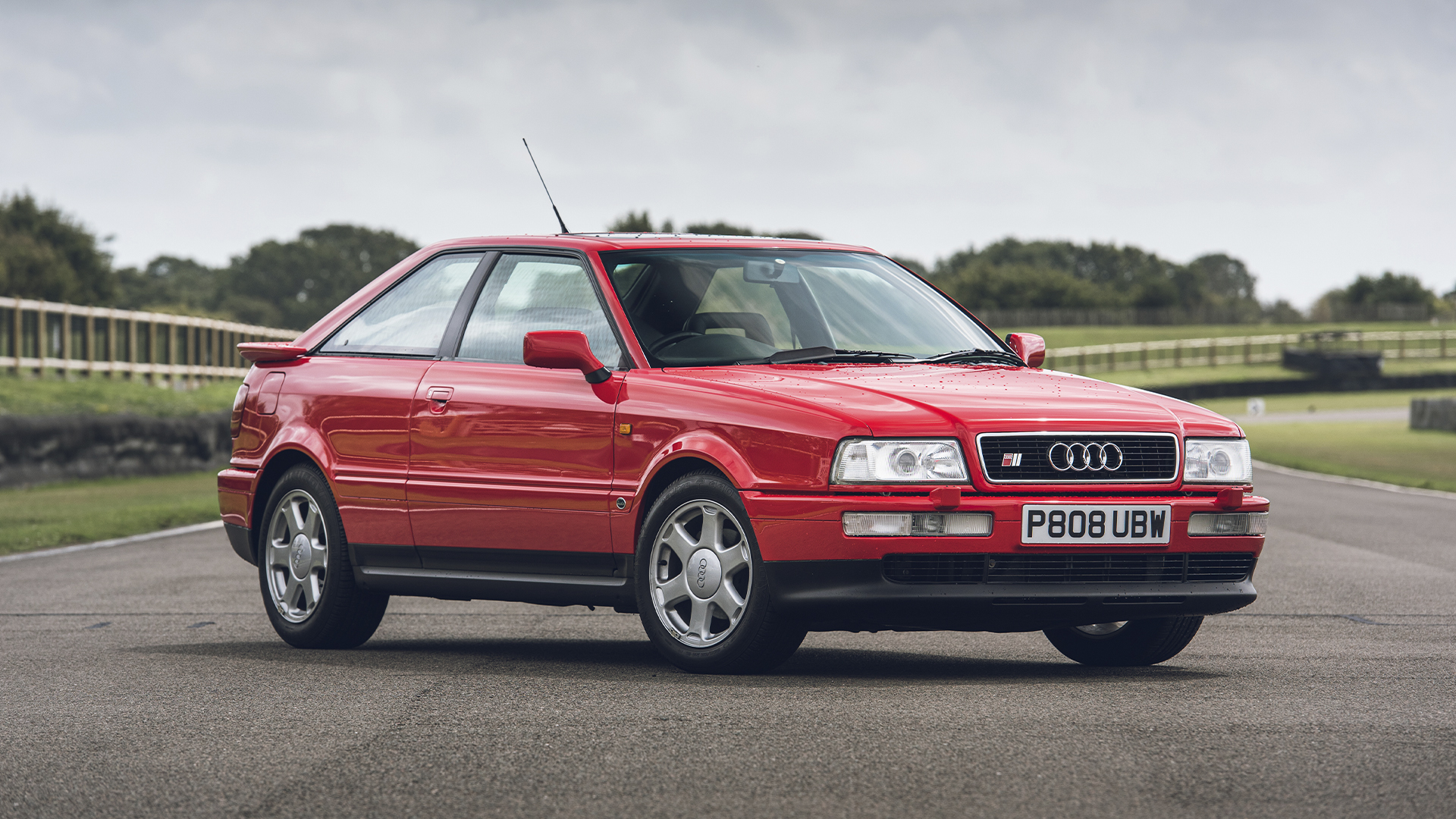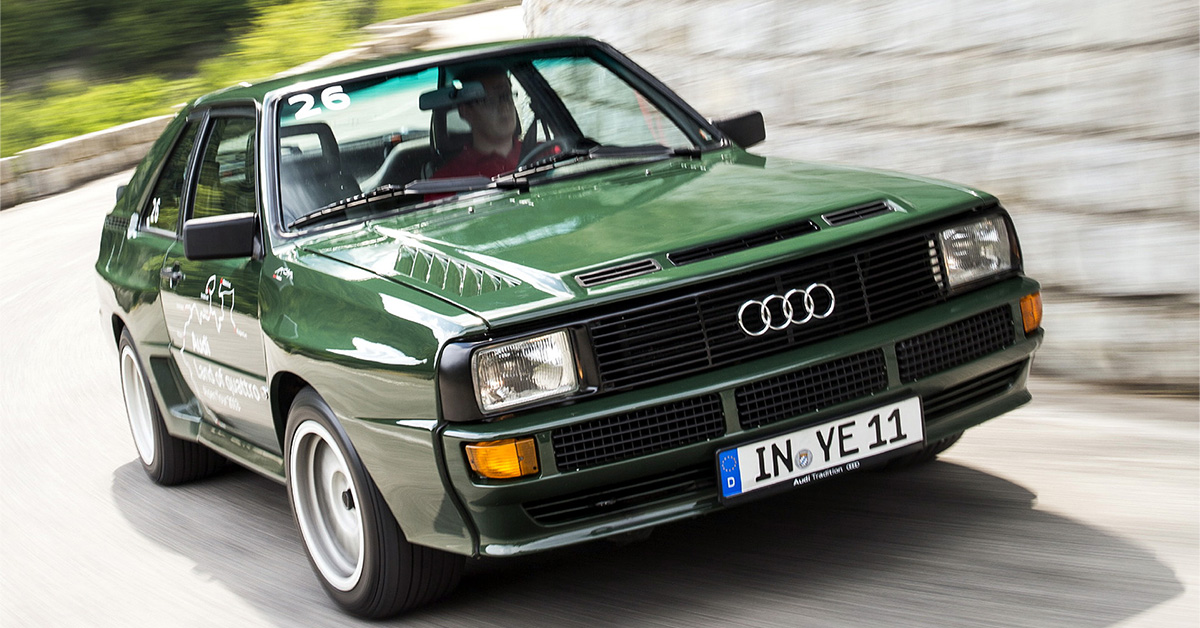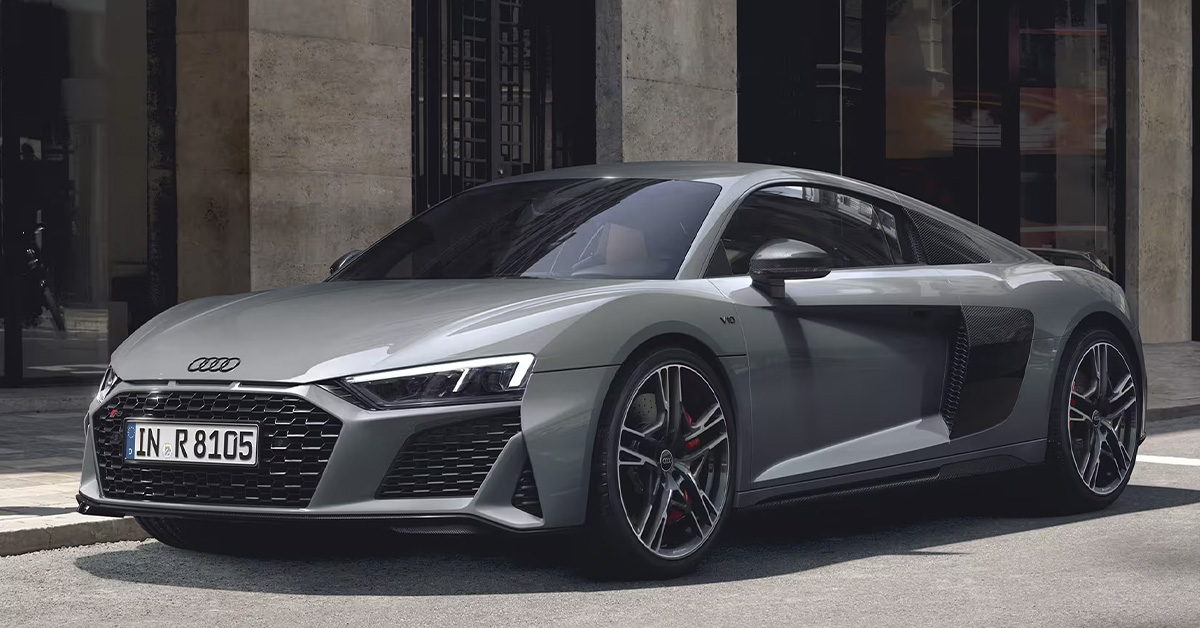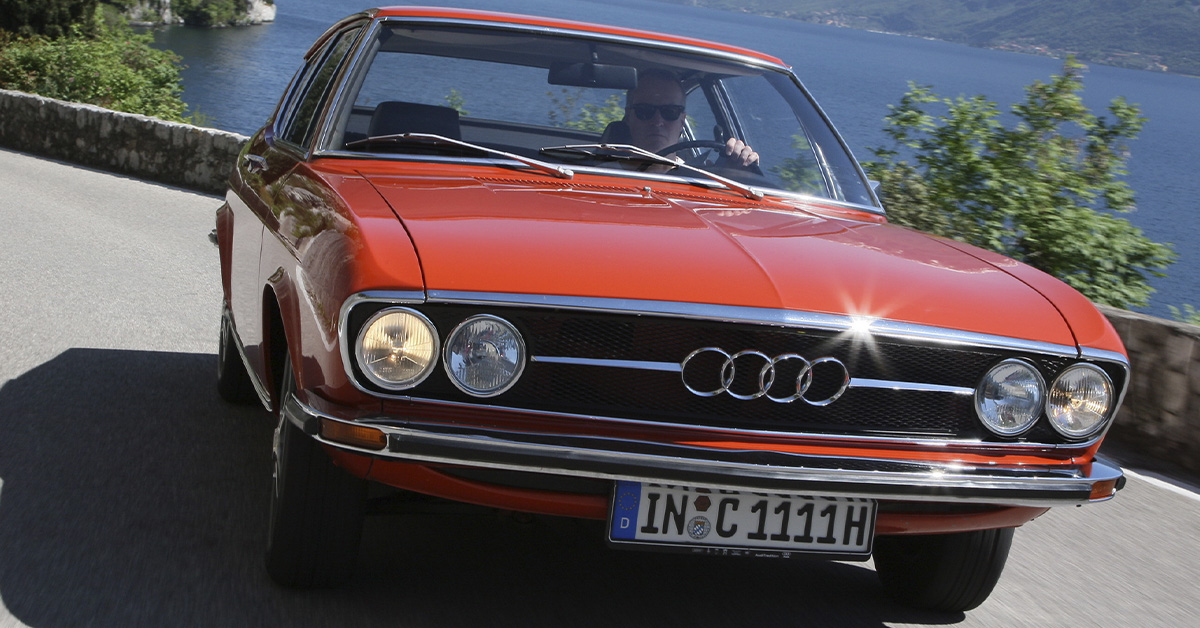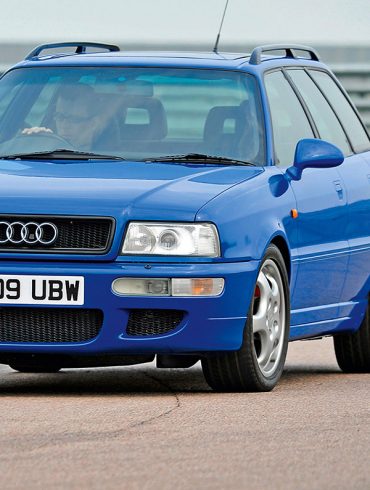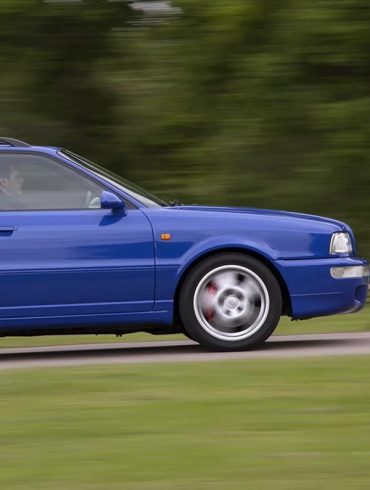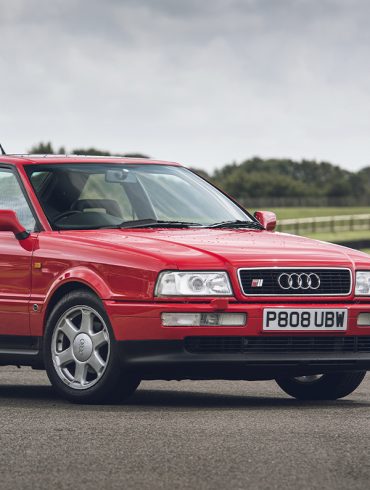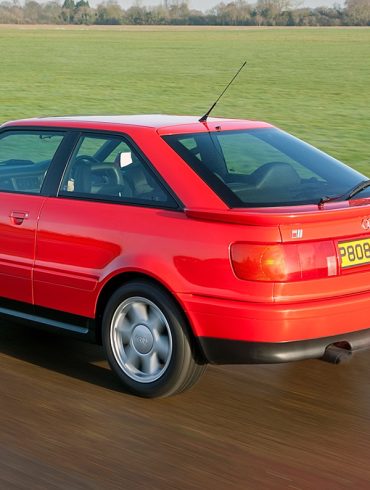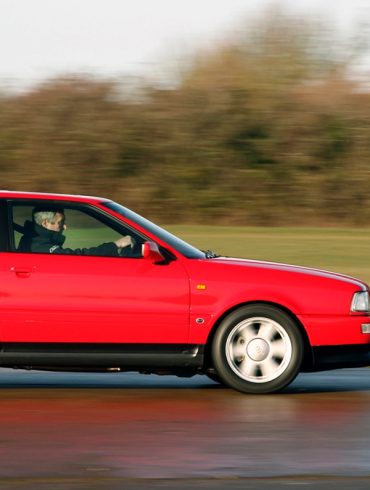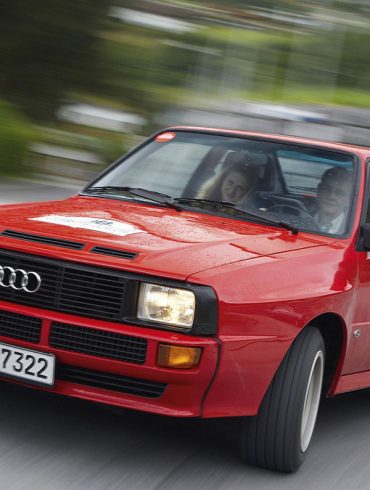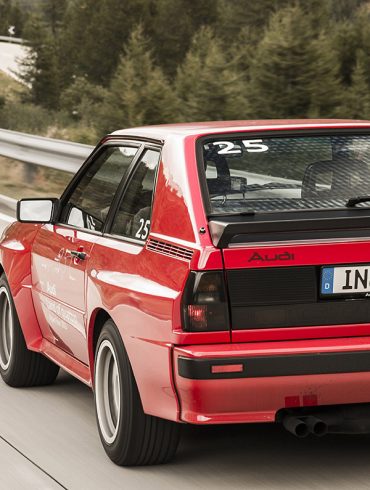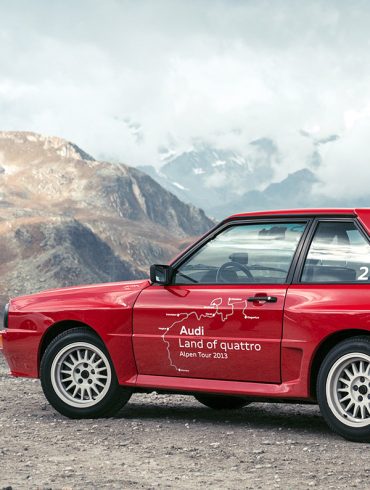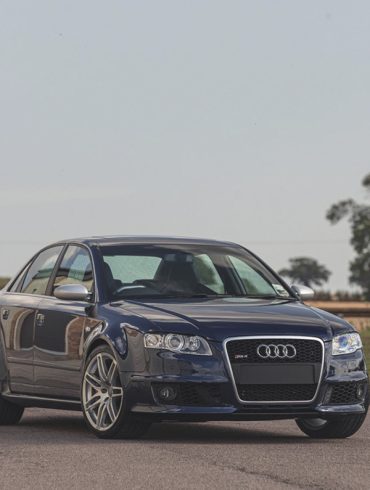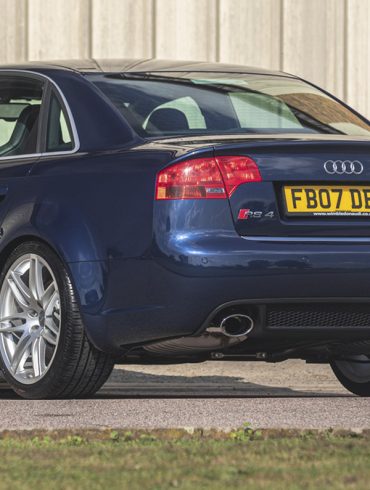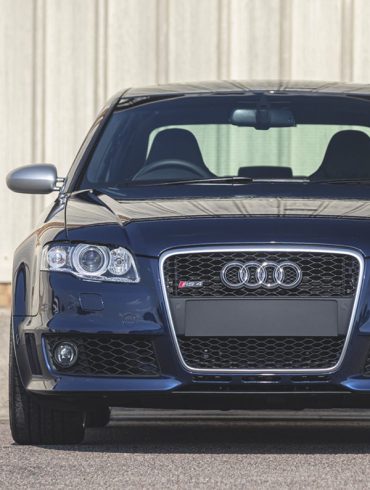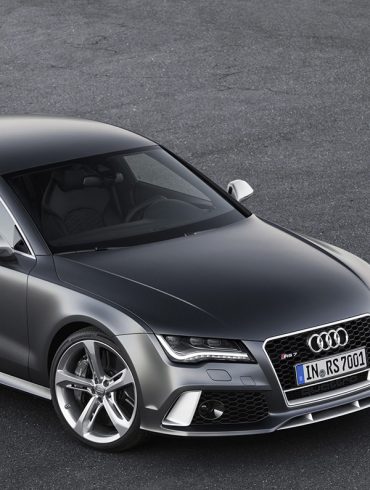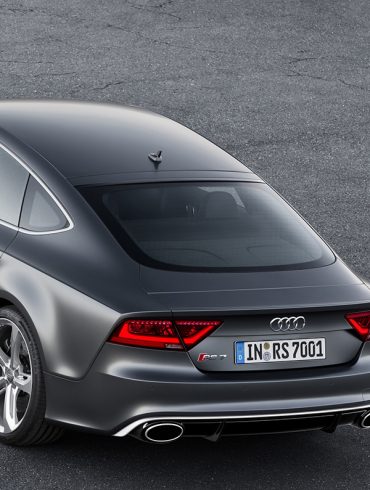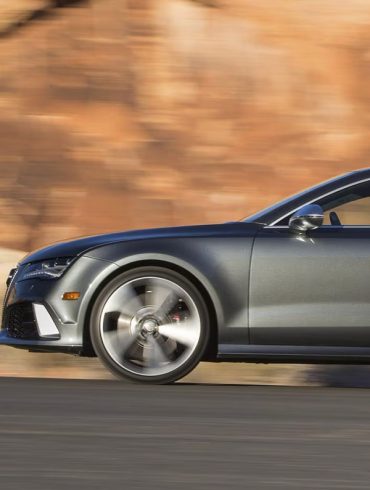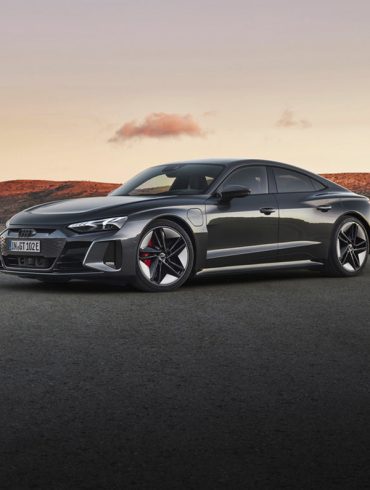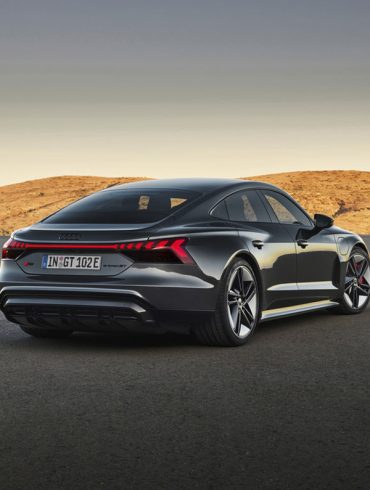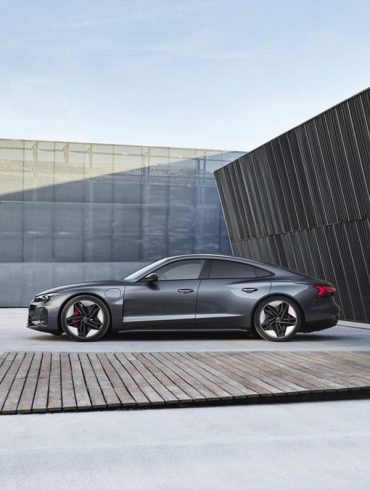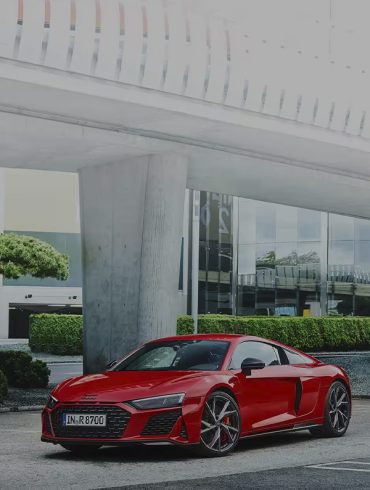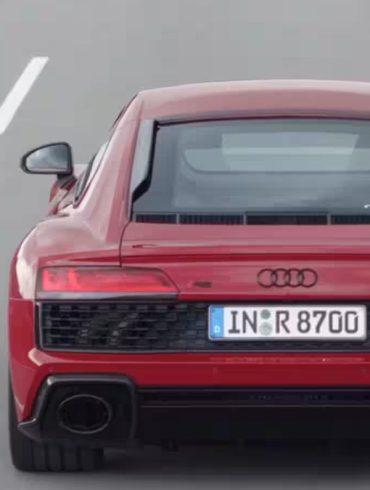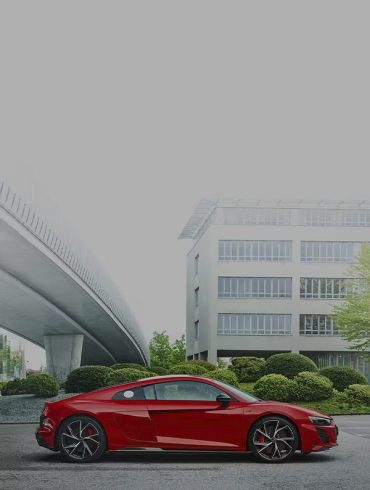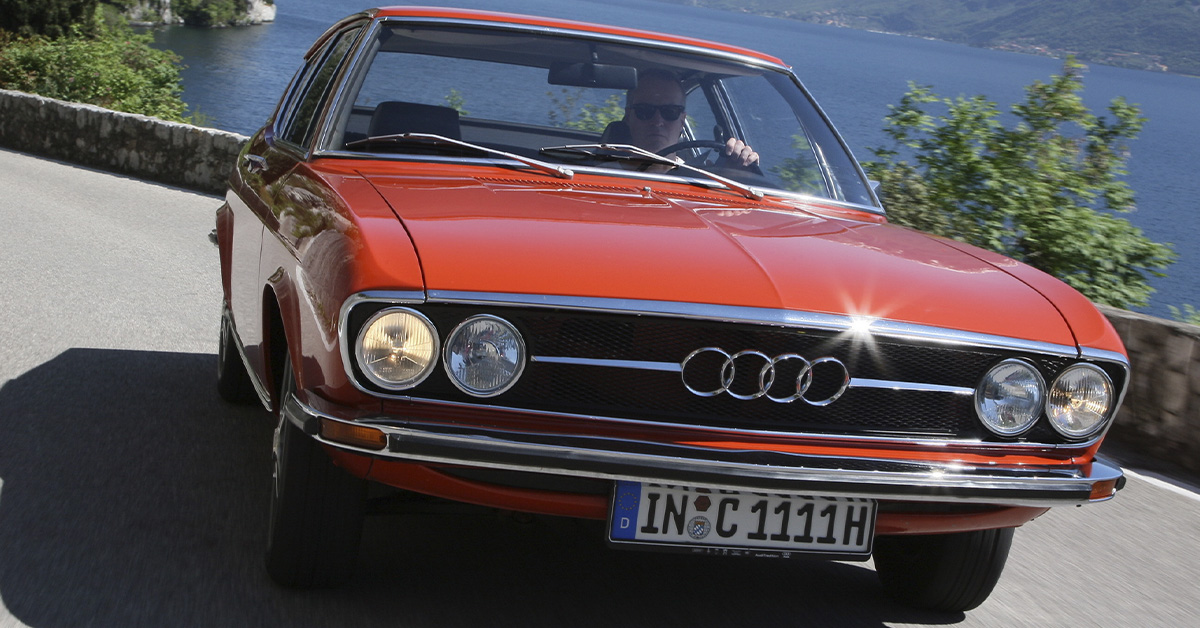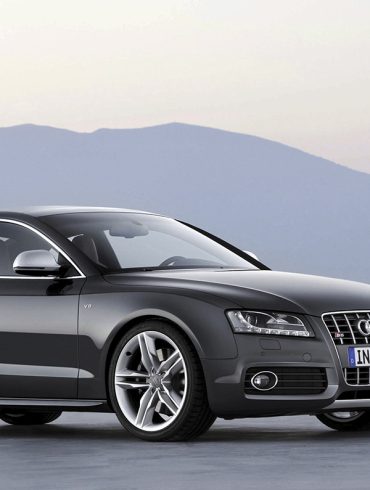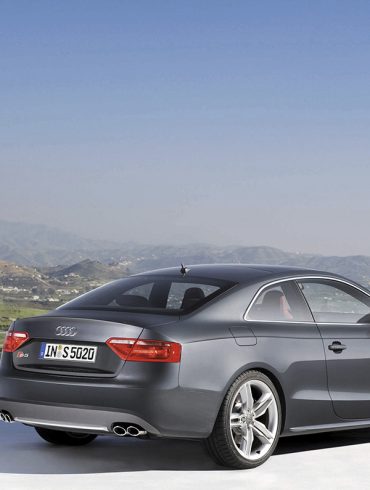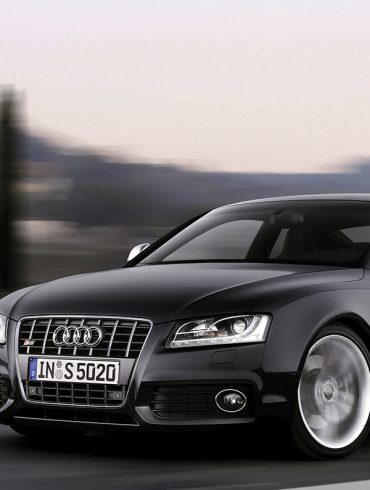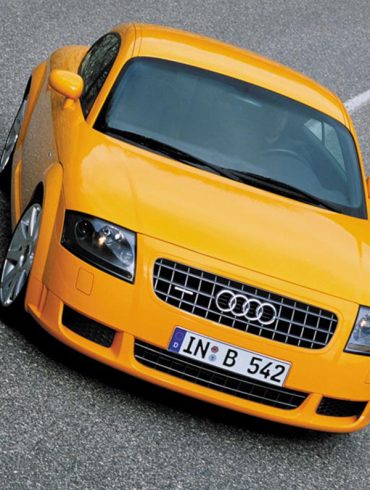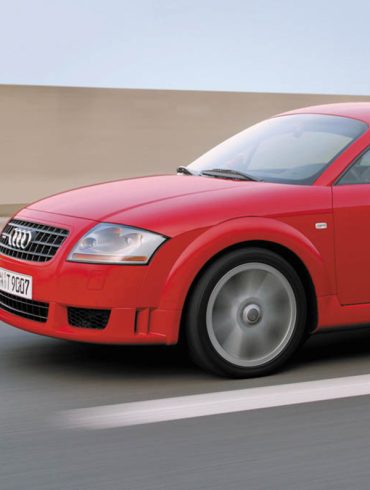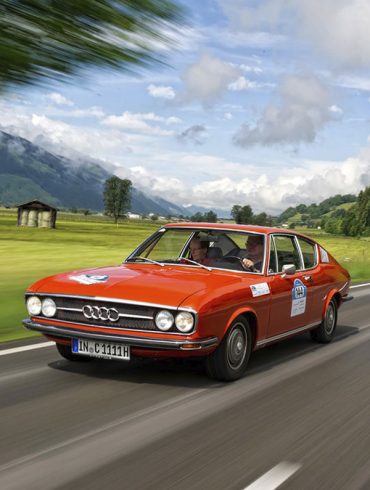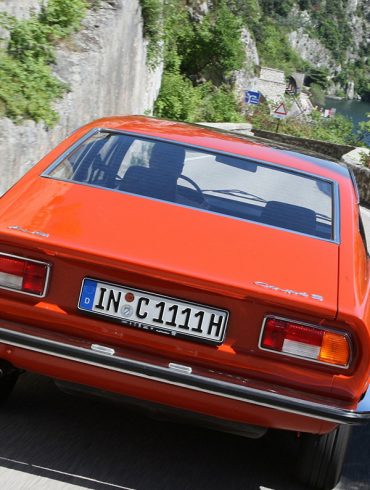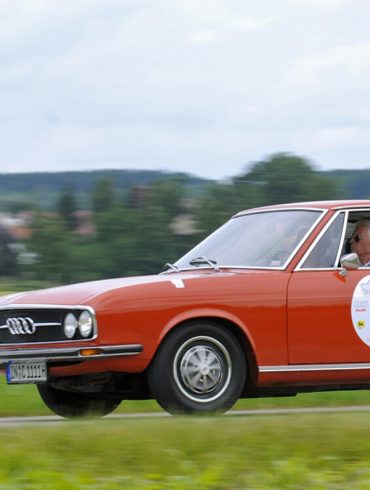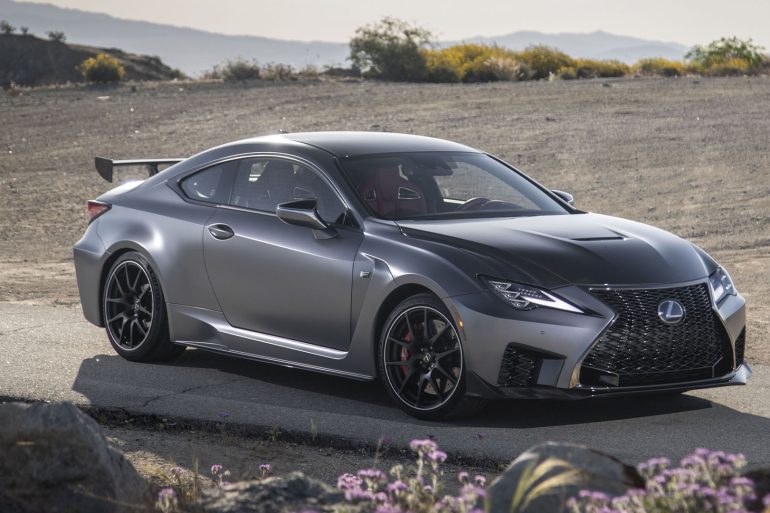About Our Selections
Audi, a brand synonymous with luxury, performance, and revolutionary engineering, has been a key player in the auto industry for many years. With a history dating back to the 1900s, Audi has consistently pushed boundaries and set new automobile standards. Every Audi vehicle showcases attention to detail by blending cutting-edge technology with premium materials to create an immersive driving experience.
Audi's relentless pursuit of innovation is demonstrated through its all-wheel-drive systems and breakthrough advancements in engine technology. Audi continuously strives to enhance performance, safety, and efficiency. As a pioneer in EV technologies, Audi's e-tron lineup reflects its commitment to sustainability. These all-electric and plug-in hybrid models offer zero- or low-emission driving without compromising performance, setting benchmarks for eco-friendly luxury vehicles.
Audi's unwavering dedication to excellent, groundbreaking technologies and commitment to sustainability solidify its position as an industry leader. Audi redefines the driving experience with each model they release, making their cars synonymous with sophistication, performance, and progress in the evolving world of automobiles.
In this list, we celebrate the best sports cars from Audi and honor their contributions to the automotive world.
The Most Notable & Desirable Audi Sports Cars
These Audi sports cars are the most sought-after and notable because of their performance, design, and legacy in the auto industry.
Audi RS2 Avant
A quick 90s estate with a little help from Porsche
What Makes It Special
The Audi RS2 Avant is a car that needs no introduction. It's still impressive, almost 30 years after its release, and is hands-down one of the most sought-after Audi models and perhaps the most recognized and desirable performance wagon ever. Audi manufactured the RS2 Avant from 1994 to 1995, making 2,891 in total. But what makes the RS2 Avant so special?
For starters, it was Audi's first model sporting the "RS" badge, and has since spawned Audi's impressive lineup of performance cars. Additionally, this car was developed in collaboration with Porsche, bringing Audi to a new level of engineering and performance. Furthermore, since it's a station wagon, the RS2 Avant had an uncommon body style for a high-performance vehicle at its time.
Underneath the RS2 bonnet lies a 2.2-liter turbocharged, twin-cam inline-5 engine capable of generating an impressive 315 horsepower and 302 lb-ft of torque. The engine is mated to a six-speed manual gearbox and Audi's quattro all-wheel drive system. The RS2 Avant delivered outstanding power and agility and could rocket from 0 to 60 mph in 5.2 seconds and reach a top speed of 163 mph.
Engine & Drivetrain Specifications
Engine: 2.2L DOHC 20-Valve Turbocharged Inline-Five
Power: 315 hp
Torque: 302 ft-lbs @ 3,000 rpm
Transmission: 6-speed manual
Accomplishments, History, & Racing Achievements
The Audi RS2 Avant found success in the Super Touring Championship and was particularly successful in the German ADAC Super Tourenwagen Cup (STW) during the mid-1990s.
In 1994, The RS2 Avant established a record for the fastest estate car, reaching a top speed of 163.8 mph (263.6 km/h) at the Nardo Ring in Italy.
Resources & Owner's Communities
Audi Coupé S2 quattro
The forgotten smooth coupe
What Makes It Special
Based on the Audi 80, the S2 Coupé began its journey in the summer of 1990. The S2 was a fast and agile car that was also relatively affordable.
It featured a 2.2-liter, five-cylinder, 20-valve engine placed longitudinally and derived directly from the Audi Quattro (S1) with KKK turbo and intercooler mounted on the Audi 200 20V. The S2 Coupé was only produced from 1991 to 1995, with only 7,370 units, making it a relatively rare car today.
The first variant of the S2 had an output of 217 hp and a five-speed gearbox, while the 1992 model received an update by increasing its power to 230 hp and mounting a six-speed box inherited directly from the Audi S4.
The most remarkable thing was the increased torque from 227 lb-ft to 258 lb-ft, reaching up to 280 lb-ft thanks to a brief increase in boost pressure from the overboost function.
The benefits from this increased torque meant that from the 5.9 seconds that the 1990 model took to reach 60 mph, the 1992 model lowered that time by two-tenths. Both models had a top speed of around 155 mph.
Engine & Drivetrain Specifications
Engine: 2.2L DOHC 20-Valve Turbocharged Inline-Five
Power: 220 hp
Torque: 228 ft-lbs @ 1,950 rpm
Transmission: 5-speed manual
Accomplishments, History, & Racing Achievements
The Audi S2 quattro sedan was famous in the German Touring Car Championship (DTM) in the early 1990s with drivers Frank Biela and Dirk Adorf.
The S2 also had a successful career in the British Touring Car Championship (BTCC) and the Australian Touring Car Championship (ATCC), thanks to its versatility and performance.
Resources & Owner's Communities
Audi Sport quattro
The game-changer
What Makes It Special
The Audi Sport quattro impacted the auto industry thanks to its innovative features and influence on motorsport and road car technology. It was introduced in 1984 and became a game-changer for Audi.
One of the standout features of the Audi Sport was its adoption of the quattro all-wheel drive system, which had already proven its capabilities in rally racing through the Audi Quattro. This system improved traction, stability, and handling, making the car formidable on both roads and rally stages.
Powering the Sport quattro was a turbocharged five-cylinder engine that delivered 306 horsepower and 258 lb-ft of torque. The combination of turbocharging and all-wheel drive resulted in exhilarating acceleration and enhanced performance, showcasing Audi's engineering expertise.
Audi incorporated materials like kevlar and carbon fiber into the construction of the Sport quattro to reduce weight. This focus on design improved agility and handling, ultimately enhancing performance capabilities.
The groundbreaking technology and motorsport success of the Sport quattro played a role in shaping Audi models. The quattro all-wheel drive system became synonymous with the brand as it found application in models that helped establish Audi's reputation for producing performance-oriented vehicles.
Engine & Drivetrain Specifications
Engine: 2.1L DOHC Turbocharged Inline-Five
Power: 306 hp
Torque: 258 ft-lbs @ 3,700 rpm
Transmission: 5-speed manual
Accomplishments, History, & Racing Achievements
Audi developed the 500-hp, 1000-kg Sport Quattro S1 specifically to rule Group B after entirely disrupting the rally scene in the early 1980s with its ground-breaking full-time four-wheel-drive technology. Despite its inability to match the success of the previous Quattro rally cars, many people still regard the S1 as the vehicle that defined the Group B rally.
Unlike other Group B homologations that are mere road-legal race cars with a license plate, the Sport quattro, was a competent car in its own right. It was equipped with the same 2.1-liter inline-5 turbocharged engine as the S1, but it was fitted with comfort amenities that made it practical for daily driving.
Resources & Owner's Communities
The Best Performing Audi Sports Cars Ever Made
No matter what driving experience you're looking for, there's an Audi that will exceed your expectations.
Audi RS4 B7
The unassuming saloon
What Makes It Special
The RS-4 was the first Audi RS with a naturally aspirated engine and a body that glimpsed what was hidden underneath. Until then, the RS lineup had relatively discreet designs, but Audi decided to nix discretion with the RS4 B7.
The wheel arches, as well as the wheels, were muscular and wide. Two generously sized exhaust tails peeked out of the rear bumper and the front, with the colossal grille the brand launched in those years flanked by large air inlets. You didn't have to be a car expert to realize that the RS4 B7 was not a conventional car.
Under the hood was a 4.2-liter V8 that Audi later used in the R8. The RS4 B7 yielded 420 hp and 317 lb-ft of torque at 5,500 rpm, paired with a six-speed manual gearbox. In addition, the car moved with ease thanks to a power-weight ratio of 8.6 pounds (3.93 kilos) per horsepower.
Although the RS4 had Audi's quattro system (all-wheel drive), the vehicle weighed only 3,368 pounds (1,650 kilos). Its 0–60 mph (100 km/h) time was 4.8 seconds for the sedan and 4.9 for the Avant, and the top speed was limited to 155 mph (250 km/h).
Engine & Drivetrain Specifications
Engine: 4.2L DOHC 32-Valve V8
Power: 420 hp
Torque: 317 ft-lbs @ 6,000 rpm
Transmission: 6-speed manual
Accomplishments, History, & Racing Achievements
The RS4 B7 was meant to replace the C5 RS6 in the SCCA Speed World Challenge. But after Champion Racing prepped the car, SCCA regulation changes on Audi 4WD systems, wheel size, and engine power output prevented it from competing in the series. Champion Racing and Audi employed the Speed World Challenge RS 4 in the American Le Mans Series Vitesse Program, demonstrating the technology link between race cars and series production road cars.
Audi Sport Italia raced the RS 4s six times in the Euro Superstars Series. 2007 and 2008 Audi RS 4 Quattro champion Gianni Morbidelli.
Resources & Owner's Communities
Audi RS7 Sportback
A posh saloon that packs a punch
What Makes It Special
The first-gen Audi RS7 is a four-door family car with a unique sloping rear design. It's based on the Audi S7, an already quick sedan, with its twin-turbo V8 engine producing 414 horsepower and 405 pound-feet of torque. However, Audi took things up a notch with the RS7 and bumped the power to 552 horsepower and 516 pound-feet of torque, surpassing its competitors.
Thanks to Audi's quattro system, you won't even notice that the RS7 weighs around 1995 kilograms, making it slightly heavier than rivals from its era. This system helps propel the car from 0 to 60 mph in under four seconds, giving you an exhilarating experience that pushes you back into your seat. By default, the top speed is set at 155 mph. But Audi can increase it to an impressive 189 mph for an additional cost.
The RS7 is an accomplished sports car. If your idea of enjoyment involves cruising down roads at high speeds, it delivers excitement. Of course, you wouldn't want your luxury sedan to handle like a raw sports car. However, the RS7 perfectly embodies what makes Audi's RS models so appealing: it looks great, performs well, and boasts craftsmanship.
Engine & Drivetrain Specifications
Engine: 4.0L TFSI V8
Power: 552 hp
Torque: 516 ft-lbs @ 1,750-5,500 rpm
Transmission: 8-speed automatic
Accomplishments, History, & Racing Achievements
While the RS7 Sportback packed excellent performance and advanced engineering, it wasn't built for racing purposes like Audi's homologated models used in series such as the DTM (Deutsche Tourenwagen Masters) or other professional racing championships.
Despite not having any achievements in motorsports, the first-generation RS7 Sportback was a very successful Audi model. It was an obvious choice for a fast, luxurious, and practical family car.
Resources & Owner's Communities
Audi RS e-tron GT
Performs as good as it looks
What Makes It Special
Inside the Audi RS e-tron GT, everything focuses on the driving experience. Its sculptural design unites the dynamic proportions of a grand tourer with the unmistakable characteristics of an Audi RS model.
The optional carbon fiber roof comprises a high-tech material that is very stable and extremely light. Thanks to intelligent thermal management, maximum accelerations are kept constant without losing performance. In addition, activating the boost function allows you to experience 48 Hp of additional power for 2.5 seconds.
Every detail of the Audi RS e-tron GT underlines its high sporting performance. For example, its excellent weight distribution achieves a low center of gravity for exhilarating performance. The RS e-tron GT's rear spoiler is a gently sloping line that extends to the rear of the vehicle, which, together with its distinctive rear diffuser, gives the impression of strength and speed.
The integrated 800-volt lithium-ion battery offers extraordinarily high performance for charging and driving. In combination with the recovery system, it provides a range of 472 kilometers (WLTP). The aerodynamics can be actively adjusted via the rear wing and the cooling air inlets at the front. The Audi e-tron is a significant milestone in the auto industry's future.
Engine & Drivetrain Specifications
Engine: 2 permanent-magnet synchronous AC
Power: 637 hp
Torque: 612 ft-lbs
Transmission: Direct-drive, 2-speed automatic F/R
Accomplishments, History, & Racing Achievements
Since it wasn't conceived for racing, the Audi RS e-tron GT hasn't accomplished any racing exploits. It's uncertain whether it will ever get the chance to demonstrate its potential in motorsport.
However, the release of the RS e-tron GT has helped cement Audi's reputation for producing vehicles with cutting-edge technology and excellent performance.
Resources & Owner's Communities
Audi R8 V10 RWD
From the track to the streets
What Makes It Special
A passion for speed runs deep in the new Audi R8 Coupé V10 performance quattro. Audi R8 Coupé V10 performance quattro's fixed rear wing advertises the car's stellar propulsion system. The Audi R8 Coupe V10 performance quattro has a 610-horsepower V10 naturally aspirated engine and can accelerate from 0 to 60 mph (100 km/h) in 3.7 seconds.
Audi's Magnetic Ride technology makes minute adjustments to each tire in response to the driver's input and the road surface, resulting in excellent dynamics. The R8 also features carbon fiber-reinforced ceramic brakes.
Audi's space frame is made from aluminum and carbon fiber (CFRP) composite material. With this body, the Audi R8 Coupé V10 performance quattro comes in at a feathery 3,196 pounds (1450 kilos). That's 70 pounds (35 kilos) less than its predecessor.
The wide stance and low athletic profile of the Audi R8 result from the design's deep horizontal lines. Carbon fiber Side Blades dominate the sides, while the rear is highlighted by an air outlet grille and new oval tailpipes finished in a glossy black. The colossal carbon fiber fixed spoiler is an absolutely stunning finishing touch.
Engine & Drivetrain Specifications
Engine: 5.2L FSI DOHC V10
Power: 570 hp
Torque: 405 ft-lbs @ 6,400 rpm
Transmission: 7-speed automatic
Accomplishments, History, & Racing Achievements
The Audi R8 V10 RWD has not yet established a track record of success in motorsport; therefore, its mettle remains to be tested. However, it shows promise as a competitive racing vehicle.
Power output-wise, the R8 V10 RWD can keep up with any supercar. It can reach 60 miles per hour in 3.7 seconds and go as fast as 198 miles per hour. It has rear-wheel drive, making it more fun to drive than the R8 variants with all-wheel drive.
Resources & Owner's Communities
The Best Looking Audi Sports Cars Ever made
When it comes to beautiful automobiles, perhaps Audi is not the first brand that comes to mind, as they are renowned for remarkable engineering and innovation. However, there are a few gorgeous models in their lineage too.
Audi S5 Coupe
The sleekest Audi?
What Makes It Special
With its swooping design silhouette and coupe shape, the Audi S5 helped launch Audi's new MLB chassis, which stands for modular longitudinal chassis and architecture.
Although Audi has maintained its longitudinal engine design, the front differential is mounted before the clutch, unlike earlier Audi models. The S5 has a smaller front overhang and better weight distribution, with an optimal 50:50 split thanks to the larger wheelbase. The steering column has also been modified for improved steering feel and is now situated lower in the chassis.
Excellent handling was a feature of the S5, which seemed quicker and more communicative than earlier Audis. The 4.2-liter V8 engine in the S5 produces 354 horsepower and 325 lb-ft of torque thanks to FSI direct injection. From 0 to 60, it only takes 5.1 seconds. All four wheels receive power from a six-speed manual or six-speed automatic transmission.
Overall, the S5 is a grand tourer that looks great and drives even better. The four-wheel drive gives the Audi S5 a practical advantage over its rear-drive competitors, and the revised suspension significantly enhances ride quality, complemented by its lively steering that makes up for an enjoyable driving experience.
Engine & Drivetrain Specifications
Engine: 4.2L DOHC 32-Valve V8
Power: 354 hp
Torque: 324 ft-lbs @ 3,500rpm
Transmission: 6-speed manual / 6-speed auto
Accomplishments, History, & Racing Achievements
When Audi designed the A5 platform, they had no plans for competing in motorsports; therefore, the S5 has no racing achievements. Nevertheless, the first-generation Audi S5 was a sports coupe that combined performance, luxury, and stylish design.
The S5 appealed to drivers who wanted a blend of style and exhilaration while still appreciating the practicality and elegance that Audi is renowned for. Furthermore, the enhancements in Audi's ride and handling cars of the era showcased that its MLB strategy was a step in the right direction.
Resources & Owner's Communities
Audi TT 3.2 quattro
Beauty or beast?
What Makes It Special
The Audi TT, which debuted in 1998, has a sleek coupe shape with Bauhaus-inspired details and tasteful, subdued flourishes that give it a sporty appearance. In 2003, Audi launched a brand-new flagship model, hoping it would one day join the pantheon of iconic sports cars. That car was the TT 3.2 V6 quattro. And much work was put into this prototype to guarantee the TT's performance pedigree.
As of right before the release of the 3.2-liter naturally aspirated VR6, the original Audi TT (Mk1) only came with one engine option: a 1.8-liter turbocharged inline-four. The VR6 enhanced the driving experience, making the top-tier model the Audi TT of choice for gearheads while the rest of the range struggled with turbo lag.
This Audi TT had a powerful 250-horsepower engine, but the transmission sets it apart. The initial iteration of the Audi TT featured a manual transmission across the board, but the German automaker decided to shake things up with the flagship model. Enter the DSG. The direct-shift gearbox, now standard on all new Volkswagen Group sports cars, debuted on the most powerful Mk1 TT.
Engine & Drivetrain Specifications
Engine: 3.2L DOHC 24-Valve V6
Power: 247 hp
Torque: 236 ft-lbs @ 2,500 rpm
Transmission: 6-speed manual / DSG
Accomplishments, History, & Racing Achievements
Although the TT 3.2 VR6 is capable, Audi didn't design it with motorsport in mind, like other Audi racing models used different championship series.
The Audi TT 3.2 quattro shines thanks to its Bauhaus-inspired design, quattro all-wheel drive, performance, thrilling driving dynamics, and blending of luxury and sportiness.
Resources & Owner's Communities
Audi 100 S Coupé
Effortlessly refined
What Makes It Special
The Audi 100 Coupé S, a sporty fastback grand touring coupe, showcases a timeless charm that still captivates car enthusiasts today. It was introduced in 1969 and represents Audi's skill in design and engineering during that era.
At the core of this two-door vehicle is a 1.9 liter inline-four engine delivering a power of 115 horsepower when combined with its smooth manual transmission. Its front-wheel-drive configuration and independent suspension contribute to a more refined driving experience.
Apart from its performance, what sets the Audi 100 Coupé S apart is its lines and distinct front-end design. The quad headlights are sophisticated, while the crafted curves blend seamlessly with the elongated roofline, creating an enduring sense of beauty.
Inside the car, you'll find a cabin adorned with seats and polished wood accents. This classic coupe strikes a balance between being a daily driver and an elegant grand tourer. Today, those who appreciate the blend of style and driving pleasure that only classics can offer continue to treasure the Audi 100 Coupé S as a valued and rare collectible piece.
Engine & Drivetrain Specifications
Engine: 1.9L Inline-Four
Power: 112 hp
Torque: 118 ft-lbs @ 3,500 rpm
Transmission: 4-speed manual
Accomplishments, History, & Racing Achievements
The 100 Coupé S was innovative because it was one of the first cars to incorporate a front-wheel-drive configuration. This layout gave the 100 Coupé S better handling, weight distribution (60% of the weight is over the front wheels), and fuel efficiency compared to its competitors.
Overall, Audi fans cherish the 100 Coupé S more for its timeless design, refinement, and comfortable cruising experience than its involvement in racing accomplishments.


